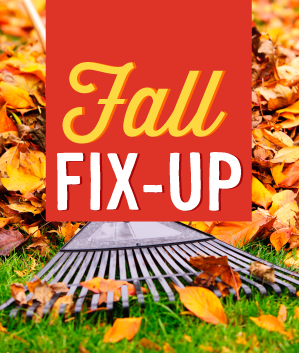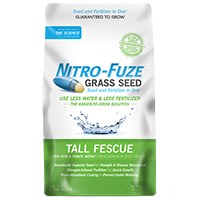
Your lawn undergoes a lot of stress during the summer including heat, traffic, drought, insects, and weeds. Fall is the best time to revive dull or damaged lawns while preparing it for the changing weather. Here are some tips to strengthen your lawn and it’s root system this fall.
Test It
Grass has preferences for soil conditions during the summer time especially. If lawns are damaged due to no specific reason the problem may be deeper than the grass itself, it may be the soil. Have your soil tested prior to using any lawn fertilizers. This will help you choose an improvement method. This information will help restore your lawn and give it a new, healthy, start.
Air!
Lawns that have a lot of traffic often suffer from soil compaction. This causes grass roots to receive less oxygen than they need. The best way to loosen soil is by aerating. This can be done by a lawn service or on your own by using a rental. While aerating, it is also a good time to amend your soil with a conditioner. For more information on aerating, check out our article: Lawn Improvement.
Seed Sowing
Choose a seed that is appropriate for your location and conditions. Sunlight, shade, temperatures, winds, and rain and traffic levels should be taken into consideration. Water newly seeded areas frequently (2-3 times a day) and lightly. Keep the soil moist but do not flood it! Gradually reduce watering frequency and increase duration until plants are well established. For more information on seeding, check out this article.
Fertilize
After seeding, be sure to cover the area with mulch. This will keep the soil moist, improve germination, and hold seeds in place. Top-dress the lawn with an organic compost if the soil test showed low levels of organic material. Grass seed needs nitrogen to grow a full, healthy lawn. No exceptions. The best way to accomplish this is by using a grass seed already infused with nitrogen. Nitro-fuze technology has the perfect amount of nitrogen adhered to the grass seed for optimal fertilizing. It also seals in the nitrogen with a water-absorbent coating for maximum moisture retention. Otherwise, if you use a different grass seed, you can add a Starter Fertilizer to the native soil after planting. Apply at the recommended rate on the fertilizer packaging.
Begin a Lawn Fertilizer Program on your lawn generally after you have mowed the new grass for a third time. A lawn fertilizer program helps maintain timing and application of the correct and effective nutrients.
If you’ve already applied an herbicide, such as Schultz Weed & Feed, wait at least 16 weeks before you plant any grass seed.
Raking
As the season begins to change, get a head start on raking your leaves especially on newly planted grass. Rake the leaves in to flower beds that won’t bloom until spring. You can also mow over the leaves to help supplying the lawn with additional nutrients or for compost projects. And don’t forget about your shrubs and plants! Use shredded leaves as mulch to protect their base. Always be sure to wear gloves.











